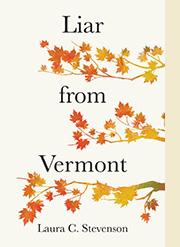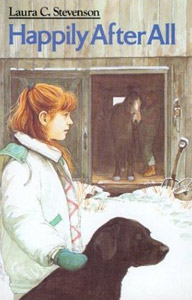A New Series: One Minute Reviews of
Books by Vermont Authors
Laura's column "One Minute Reviews" has appeared bi-weekly in Wilmington, Vermont's Deerfield Valley News since 2015. In April 2018, she found that no Vermont periodical consistently reviews all commercially published fiction and non-fiction by Vermont authors, so she started a series to fill that void. Published reviews from that series and some earlier reviews of local authors are listed with links to a scan of the printed copy. Reviews still in queue are listed without links until they appear in print.
The books reviewed in this series are available through Wilmington's Pettee Memorial Library, the Whitingham Free Public Library, and locally owned Bartleby's Books in Wilmington.
Deerfield Valley News, 4/21/2022
Vermont Humor, Illustrated
Don Hooper and Bill Mares. I Could Hardly Keep from Laughing: An Illustrated Collection of Vermont Humor. Rootstock Publishing, 2021
The title of this delightful book comes from a long-ago encounter between Mark Twain and a Brattleboro audience. Twain, as was his usual fashion, gave readings and dropped his famous one-liners; but the audience, as was not the usual fashion, awarded him no more than “a few smiles and a snicker.” Puzzled, Twain slipped out a side entrance at the end of the program so he could hear informal comments. From the shadows, he saw an elderly couple get into their buggy and heard the husband say to his wife, “Warn’t he funny! Why, he was so funny I could hardly keep from laughing!” The episode opens a discussion of humor’s place in nineteenth century Vermont society, which assumed taciturnity was a mode of speech, accepted penury as a way of life, and considered a six-week growing season adequate compensation for mud season and a seven-month winter. The “dry, wry, understated” humor of this Vermont assumed a small world of neighbors and gossip. (‘Jim’s wife eloped with the hired man!’/ ‘Not in Jim’s new Ford!?’) Outside that small world, there was the straight man (‘Does it matter which road I take to Goshen?’/ ‘Not to me, it don’t.’) This kind of humor was changed by the automobile, which made Vermont easily accessible to people culturally different from natives; by 1946, according to Mares, 7% of Vermont’s houses were seasonal. The metamorphosis provided jokes in which “summer folks” and tourists unwittingly provided a new kind of straight men, like the one who told a Manchester bookstore owner he loved Vermont because it was beautiful and quiet, adding, “But you’ve got to admit, there’s a lot of strange people up here.” The reply: “Yes, that’s right, but they all go home, come September.”
The construction of Routes I-91 and I-89 changed Vermont irrevocably, and as Mares says, “its humor had to change as well.” He refers to his book (with Frank Bryan) Real Vermonters Don’t Milk Goats, which documented “the shift in Vermont’s social landscape to dominance by the immigrant ‘Flatlanders.’” Like the older Vermont humor, this brand has continued to target outsiders—politicians, flatlanders, and above all people who pose as ‘Real Vermonters.’ There is endless fun to be made of in listing details in dress and manner that help detect poseurs from the real item: “Real Vermonters don’t wear hiking boots in town, headbands on the street, or running shoes when they walk.” Mares also provides a helpful survival toolkit for immigrants, which necessarily contains duct tape, needle-nosed pliers, a copy of the Vermont Constitution, a chainsaw file, and a second source of income. This is humor in which immigrants poke fun at themselves, even while they laugh at the evolution of Vermont politics from a state in which a woman once apologetically refused to vote for a Democratic candidate (“Oh, no! I’m so sorry. We can’t do that. We’ve been Vermonters all our lives”) to a land “saved” by the Democrats. There remains, of course, humor in jokes about competing politicians (“Never murder an adversary who is busy trying to hang himself.”)—a genre particularly enjoyed by Hooper and Mares, both retired Vermont legislators.
Adding to the jokes and stories in this book are Hooper’s marvelous pictures (or are they cartoons?) in the margins and the middle of almost every page. Google-eyed farmers, cars sunk up to their windows in mud, a picture of St. Patrick driving the snakes out of the Northeast Kingdom in a jeep—such portraits add immeasurably to the pleasure of reading this historically-organized anthology. Looking through it, you’ll hardly be able to keep yourself from laughing.


